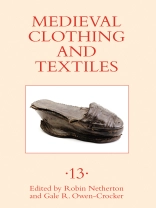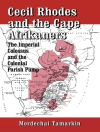The best new research on medieval clothing and textiles, drawing from a range of disciplines.
Three of the essays in this collection focus on Italy, with contributions on footwear in Lucca based on documentary evidence of the fourteenth century; aristocratic furnishings as described in a royal letter of the fifteenth century, along with its first translation into English; and Boccaccio’s treatment of disguise involving Christian/Islamic identity shifts in his
Decameron. The Bayeux Tapestry is discussed as a narrative artwork that adopts various costumes for semiotic purposes. Another chapter considers surviving artefacts: a detailed study of a piece of quilted fabric armour, one of two such items surviving in Lübeck, Germany, reveals how it was made and suggests reasons for some of the unusual features. The volume also includes an investigation of the commercial vocabulary related to the medieval textile and fur industries: the terms used in Britain for measuring textile and fur are listed and discussed, especially the unique use of Anglo-French ‘launces’ in a document of 1300.
Contributors: Jane Bridgeman, Mark C. Chambers, Jessica Finley, Ana Grinberg, Christine Meek, Gale R. Owen-Crocker
Tabla de materias
Preface
The Significance of Dress in the Bayeux Tapestry – Gale R. Owen-Crocker
How Long Is a
Launce? Units of Measure for Cloth in Late Medieval Britain – Mark C Chambers
Robes, Turbans, and Beards: ‘Ethnic Passing’ in
Decameron 10.9 – Ana Grinberg
Calciamentum: Footwear in Late Medieval Lucca – Christine E. Meek
‘Bene in ordene et bene ornata’: Eleonora d’Aragona’s Description of Her Suite of Rooms in a Roman Palace of the Late Fifteenth Century – Jane Bridgeman
The Lübeck
Wappenröcke: Distinctive Style in Fifteenth-Century German Fabric Armor – Jessica Finley
Recent Books of Interest
Sobre el autor
Gale R. Owen-Crocker is Professor Emerita of the University of Manchester where she was previously Professor of Anglo-Saxon Culture and Director of the Manchester Centre for Anglo-Saxon Studies.












